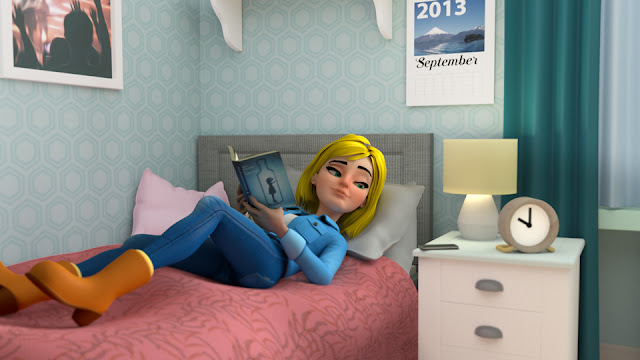About 3D Animation Process
The process of making moving visuals using 3D computer graphics is known as 3D animation. Unlike 2D animation, which creates visuals in a flat, two-dimensional space, 3D animation creates realistic three-dimensional images with depth, texture, and shading.
Concept and storyboarding, modelling,
rigging, animation, lighting, rendering, and post-production are common stages
in the 3D animation process. Each stage necessitates the use of specific skills
and tools, and may necessitate the collaboration of numerous team members to
accomplish the required results.
The process of building 3D models of
the characters and objects that will appear in the animation is known as modeling.
This entails creating the geometry of the people and objects with specialist 3D
modeling software, then adding textures and materials to make them look
realistic.
Creating
a 3D animation can be a complex process that involves several stages, from
conceptualization to final rendering. Here is a step-by-step guide on the 3D
animation process:
Conceptualization and Planning
The
first step is to conceptualize and plan the animation. This involves developing
an idea, a storyline, and characters. Once you have a clear concept, you can
then storyboard the animation, creating a visual representation of each scene
and shot.
Modeling
The
next step is modeling, which involves creating the 3D assets for the animation.
This includes creating 3D models of the characters, environments, props, and
other elements needed for the animation.
Rigging
After
the 3D assets are created, the next step is rigging. Rigging involves adding a
digital skeleton to the 3D models, allowing animators to manipulate the models
and give them movement.
Animation
Once
the models are rigged, the animators can start the animation process. This
involves creating keyframes and adding movement to the 3D models. The animators
can adjust the timing, spacing, and other aspects of the animation to make it
more realistic.
Texturing and Shading
After
the animation is complete, the 3D models need to be textured and shaded. This
involves adding surface details, such as color, texture, and material
properties to the models. The goal is to make the 3D models look as realistic
as possible.
Lighting
Lighting
is an important part of the animation process. The lighting can set the mood
and atmosphere of the animation, as well as highlight important elements of the
scene. The lighting can be adjusted to create different effects and shadows.
Rendering
Once
the animation, texturing, shading, and lighting are complete, the final step is
rendering. This involves generating the final output of the animation, which
can be in various formats, such as video, image sequences, or interactive
media.
Post-production
After
rendering, the final step is post-production. This involves editing the final
output, adding sound effects, music, and voiceovers. The final product is then
ready to be shared with the audience.
Overall,
the 3D animation process can be complex and time-consuming. It requires a lot
of skills




The 3D animation process at TVS Cube involves concept development, modeling, texturing, rigging, animation, and rendering. Our expert 3D animation services ensure lifelike visuals that captivate audiences and elevate your brand’s storytelling.
ReplyDelete